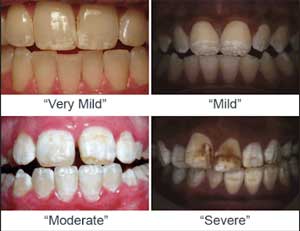- Home
- Editorial
- News
- Practice Guidelines
- Anesthesiology Guidelines
- Cancer Guidelines
- Cardiac Sciences Guidelines
- Critical Care Guidelines
- Dentistry Guidelines
- Dermatology Guidelines
- Diabetes and Endo Guidelines
- Diagnostics Guidelines
- ENT Guidelines
- Featured Practice Guidelines
- Gastroenterology Guidelines
- Geriatrics Guidelines
- Medicine Guidelines
- Nephrology Guidelines
- Neurosciences Guidelines
- Obs and Gynae Guidelines
- Ophthalmology Guidelines
- Orthopaedics Guidelines
- Paediatrics Guidelines
- Psychiatry Guidelines
- Pulmonology Guidelines
- Radiology Guidelines
- Surgery Guidelines
- Urology Guidelines
Present Guidelines for fluoride intake challenged by experts

The experts feel that it is time to re-visit guidance on fluoride intake as the present guidelines created for fluoride intake were created decades ago and have become old. Advances in Dental Research, an e-Supplement to the Journal of Dental Research (JDR), has published reviews by experts that critically examine the current guidelines for fluoride intake and challenge them. According to researchers, optimum fluoride intake should balance the prevention of dental caries with minimizing the occurrence of undesirable dental fluorosis.
Since the benefits of fluoride in drinking water were first recognized, it has been accepted that fluoride is ingested and that remains the basis for automatic delivery. However, sources of ingested fluoride have changed and in parallel the prevalence and severity of dental caries and dental fluorosis have changed, leading to the idea that it is time to re-visit guidance on fluoride intake. Optimum fluoride intake should balance the prevention of dental caries with minimizing the occurrence of undesirable dental fluorosis.
"Guidelines for fluoride intake were first proposed when water was the only important source of fluoride. Now, there is a variety of ways of delivering fluoride and it was time to review these guidelines, considering current knowledge of the balance of benefit and risk," said guest editor Andrew Rugg-Gunn, Newcastle University, UK and the Borrow Foundation. "Experts from around the world gave reassurance that the current optimum range of fluoride intake is soundly based and that there is good evidence for raising the upper limit of fluoride intake. With the increase in the use of fluoride for preventing caries in adults, different guidance should be given for fluoride intake in adults compared with infants and young children."
"While changes to current guidance on adequate intake and upper limit of fluoride intake have not been settled, it was agreed that there are strong grounds for reconsidering current guidelines," said IADR President Angus William G. Walls, University of Edinburgh, who also contributed to this issue. "Further research and international discussion is needed to answer the question posed by the title of this symposium."
Importantly, the symposium prioritized the following research gaps:
What level of dental fluorosis is acceptable to populations globally given the benefit of caries reduction?
What is the best method for measuring total fluoride intake and exposure?
What is the best way to estimate total fluoride intake in children from birth to 3 to 4 y of age exposed to fluoridated or nonfluoridated water or fluoridated salt?
What is the best method to evaluate the patterns of fluid intake of children across different zones with different outdoor air temperatures?
Do we need periodical analyses of fluoride concentrations in infant formula, bottled water, and infant foods?
Do we need to validate biomarkers of exposure to fluoride?
What is the effect of different types of exercise on the metabolism of fluoride?
What is the relationship between gene polymorphisms and enamel fluorosis?
What is the relationship between malnutrition and enamel fluorosis?
Is supplementation with calcium helpful to reduce enamel fluorosis?
What are the pre-eruptive effects of fluoride on caries progression into dentin?
What is the efficacy of low-fluoride toothpastes whose formulations have been modified to increase the anticaries efficacy?
These reviews, as well as summary of the discussion during the symposium, are included in this issue of Advances in Dental Research, an e-supplement to the Journal of Dental Research.

Disclaimer: This site is primarily intended for healthcare professionals. Any content/information on this website does not replace the advice of medical and/or health professionals and should not be construed as medical/diagnostic advice/endorsement or prescription. Use of this site is subject to our terms of use, privacy policy, advertisement policy. © 2020 Minerva Medical Treatment Pvt Ltd